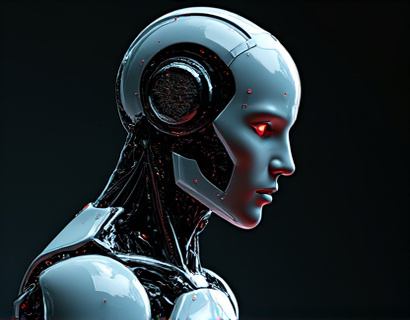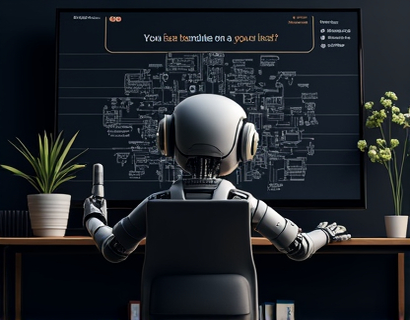Unlock the Future of Home Living: Discover Cutting-Edge Appliances for the Tech-Savvy Homeowner
The modern home is evolving at an unprecedented pace, driven by technological advancements and a growing demand for efficiency and convenience. As a tech-savvy homeowner, you understand the importance of integrating smart solutions into your living space. This article delves into the exciting world of high-tech appliances that can transform your daily life, making your home smarter, more efficient, and ultimately, more enjoyable. From innovative kitchen gadgets to advanced home automation systems, we will explore the latest offerings that can elevate your lifestyle.
Understanding Smart Appliances
Smart appliances are devices that can connect to the internet and be controlled or monitored remotely through a smartphone or other internet-connected devices. These appliances go beyond basic functionality, offering features like energy efficiency, remote control, and data analytics. For instance, a smart refrigerator can track the expiration dates of stored food, suggest recipes based on available ingredients, and even order groceries online when supplies run low. Such capabilities not only enhance convenience but also contribute to a more sustainable lifestyle by reducing waste.
Energy Efficiency and Cost Savings
One of the most compelling reasons to adopt smart appliances is their potential to reduce energy consumption and lower utility bills. Smart thermostats, for example, learn your temperature preferences and adjust heating and cooling schedules accordingly, ensuring that energy is not wasted when no one is home. Similarly, smart lighting systems can automatically turn off lights in unoccupied rooms or adjust brightness based on natural light availability. These features not only make your home more comfortable but also significantly cut down on energy costs.
Enhanced Convenience and Control
The convenience factor of smart appliances cannot be overstated. With voice-activated assistants like Amazon Alexa or Google Assistant, controlling your home's appliances becomes as simple as giving a voice command. Imagine starting your coffee in the morning, adjusting the thermostat, and preheating your oven—all without leaving your bed. This level of control not only saves time but also adds a layer of luxury to everyday tasks. Moreover, many smart appliances can be integrated into a single ecosystem, allowing for seamless interaction and management through a centralized app.
Health and Safety Features
Smart appliances often come equipped with advanced health and safety features. For instance, smart ovens can monitor cooking temperatures to prevent overheating and potential fire hazards. Some washing machines have sensors that detect the soil level of clothes, adjusting water and detergent usage to ensure optimal cleaning while conserving resources. These features not only enhance the performance of the appliances but also contribute to a safer and healthier living environment.
Smart Home Automation Systems
Home automation systems are the backbone of a smart home, connecting various devices and appliances to work together harmoniously. These systems can control lighting, security cameras, door locks, and even garden irrigation, all from a single interface. By centralizing control, homeowners can create custom scenes and routines that automate multiple tasks with a single command. For example, you can set a "goodnight" routine that locks all doors, turns off lights, and adjusts the thermostat with just one tap on your smartphone.
Integration with Smart Cities and IoT
The Internet of Things (IoT) is revolutionizing the way cities function, and smart home appliances are at the forefront of this movement. By connecting to broader smart city infrastructure, your home can benefit from real-time data and services. For instance, smart meters can provide detailed energy usage insights, helping you optimize consumption and reduce costs. Additionally, integration with local emergency services can enhance safety, with smart smoke detectors automatically alerting authorities in case of a fire.
Market Trends and Innovations
The market for smart appliances is rapidly expanding, driven by technological advancements and consumer demand. One significant trend is the development of multi-functional devices that combine several functions into one unit. For example, a smart kitchen island can serve as a cooking surface, a dining area, and a charging station for your devices. Another trend is the focus on sustainability, with manufacturers designing appliances that use less energy and materials, and are easier to recycle at the end of their life cycle.
Voice-Controlled Appliances
Voice-controlled appliances are becoming increasingly popular, thanks to their ease of use and hands-free operation. These devices use natural language processing to understand and execute commands accurately. From smart speakers that control multiple devices to voice-activated ovens and refrigerators, the possibilities are vast. As voice technology continues to improve, we can expect even more intuitive and responsive smart appliances.
Artificial Intelligence and Machine Learning
AI and machine learning are playing a crucial role in the evolution of smart appliances. These technologies enable devices to learn from user behavior and adapt to preferences over time. For example, a smart vacuum cleaner can map your home and optimize cleaning routes based on usage patterns. Similarly, a smart coffee maker can learn your brewing preferences and automatically start the brewing process at your desired time. This level of personalization enhances the user experience and makes smart appliances even more valuable.
Challenges and Considerations
While the benefits of smart appliances are clear, there are several factors to consider before making the switch. One primary concern is privacy and security. Connected devices can be vulnerable to hacking, potentially exposing personal data. It's essential to choose reputable brands that prioritize security and provide regular software updates to address vulnerabilities. Additionally, the initial cost of smart appliances can be higher than traditional models, although the long-term savings on energy and maintenance often offset this difference.
Compatibility and Integration
Ensuring compatibility and seamless integration is another critical aspect. Not all smart devices are created equal, and some may not work well with existing systems or other brands' products. Researching and selecting devices that are part of a recognized ecosystem or that have open APIs can help avoid compatibility issues. Moreover, a central hub or hubless systems can simplify the integration process, making it easier to manage multiple devices.
Future Prospects
The future of smart appliances is exciting, with ongoing innovations promising even more advanced features and capabilities. One area of focus is the integration of augmented reality (AR) and virtual reality (VR) technologies, which could revolutionize how we interact with our homes. Imagine using AR to visualize how a new smart appliance would look in your kitchen before making a purchase, or using VR to control and monitor your home from anywhere in the world.
Sustainable Technologies
Sustainability will continue to be a key driver in the development of smart appliances. Manufacturers are exploring eco-friendly materials, energy-harvesting technologies, and circular economy models to minimize environmental impact. For instance, some companies are developing appliances that can generate their own energy through integrated solar panels or kinetic energy harvesters. These innovations not only reduce reliance on external power sources but also contribute to a more sustainable future.
Conclusion
The integration of smart appliances into your home represents a significant step towards a more efficient, convenient, and sustainable living experience. As technology continues to advance, the possibilities for enhancing your daily life are virtually limitless. By embracing these innovations, you can create a smarter, more connected home that adapts to your needs and preferences, ultimately making your living space a true reflection of modern living.










































